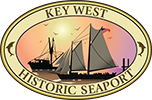Key West Bight Marina Boaters Safety Guide
Considering Florida practically has one consistent climate all year round, boating season at the Bight Marina never really ends in a sense. Every day in paradise can be an amazing time to get out on the open waters. With that said, boating and fishing are a way of life all year long and not just a one-time event throughout the year.
In this article, we will be highlighting the importance of what to do in the event of an emergency while boating on the water. We will be discussing the essential items any boater should carry on board with them to help in getting assistance quickly and we will also be going over the correct timing and use of each piece of equipment.
With accidents happening at any time of day, it is important to be thoroughly prepared in the event of any emergency. Whether you are experiencing engine trouble or a storm has left your boat incapacitated, it is crucial to remember even minor difficulties can quickly result in an emergency. Being able to summon help quickly and efficiently can make all the difference in returning safely back to the Key West Bight Marina.
Virtual Distress Signals
One of the most effective ways of getting attention from other boaters is knowing how to properly signal for help through visual distress signals. The United States Coast Guard has a minimum equipment requirement for all recreational vessels operating on U.S. coastal waters. Each vessel “must be equipped with U.S. Coast Guard-approved visual distress signals (VDS). Vessels owned in the United States and operating on the high seas must also be equipped with U.S. Coast Guard-approved visual distress signals.”
Day Distress Signals
Orange smoke flares and orange signal flags are two of the most common and widely used day distress signals. The orange distress signal flag is the official international distress signal on the open waters. Placing the flag as high as possible is crucial in allowing boaters from miles away to see your call for help. Orange smoke flares are more effective than red flares when being used in the daytime. Upon use, these hand-held flares are designed to allow smoke to linger for an extended period of time making it possible for other boaters or incoming aircraft to spot your distress signal. Considering the smoke will eventually fade out, it is crucial to know how to properly execute each flare in the event of an emergency.
Night Distress Signals
The most effective distress signal for evening use is SOS electric signal lights and red signal flares. Electric light signals display a bright light for an extended period of time. Like an orange distress flag, these electric lights can be displayed in the same fashion. When positioned correctly, electric light can signal a call for help for a timeframe that far exceeds that of any flare. Similar to the orange daytime flare, red flares are also hand-help devices that shoot a flare-up towards the sky. These red flare signals last for about three minutes and are meant to be seen from miles away These aerial red flares will burn for about 6 seconds, alerting other boaters about your distress.
Mobile Devices
With today’s technology being as advanced as it is, mobile devices have played a major role in signaling for help. Having your cell phone readily available to call 911 will make all the difference in the event of an emergency. Not only should your mobile device be part of your boating gear but storing pertinent contact information is crucial. Taking the time to store the Bight Marina dockmasters, port officials, neighboring hospitals, coast guards or any other water rescue officials will make all the difference if you need to quickly access their contact information. However, it is important that most cell services do have limitations and should not be used as your only means of contacting emergency help.
VHF Marine Radios
Monitored consistently by the U.S. Coast Guard, Very High Frequency (VHF) Marine Radios are operated and reserved for distress calls. With a frequency range between 156 and 174 MHz, VHF radios are the most popular amongst boaters. These radios are the most efficient and effective form of marine communication than any other device. They are perfect for signaling help in order to save lives, withstanding rough weather and offer consistent reception no matter the range and VHF radios are boat-mounted radios that are wired to the boat battery. Most importantly, VHF radios are like a tracking device and provide a signal which can be located in the most grueling of weather conditions, even fog.
It is important to remember that in the unlikely event of any emergency it is crucial you remain calm and act fast. Not only does the U.S. Coast Guard require all recreational boats over 16 ft. to carry visual signal devices, these devices are designed to help you should you need them. It is also important to remember to check the expiration dates of all safety devices on-board and have back up batteries and generators as well. Being thoroughly prepared will make all the difference in returning safely back to the Key West Bight Marina.
Key West Bight Marina at the Historic Seaport:
Your Gateway to Everything Key West!






